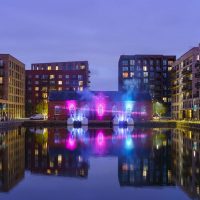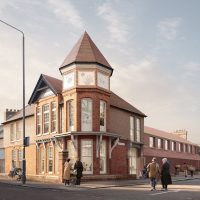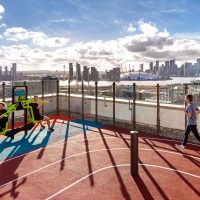
Regeneration news
The Mayor of London reaffirms his vision to deliver 36,000 new homes and 55,000 new jobs at the Royal Docks, with launch of new 5-year delivery plan
More than £2bn of public and private sector investment planned at the Royal Docks
- New homes, workspace, transport improvements and community projects to be delivered at the Royal Docks in next five years
- New development partner sought to regenerate historic Royal Albert Dock
- 129,300 homes planned for neighbouring areas
The Mayor of London, Sadiq Khan has reaffirmed his vision to restore the Royal Docks to its former glory as part of his ambition to build more than 36,000 new homes and create 55,000 new jobs across this historic part of East London.
The Royal Docks played a crucial role in the capital’s economy for more than a century from the mid-1800s, before falling into decline in the 1960s and 1970s.
Today, the Royal Docks is one of the largest regeneration areas in London, with seven significant developments being brought forward across 175 hectares of public land belonging to the Greater London Authority (GLA), representing a mix of residential, commercial, and industrial developments. Approximately £5bn of investment is planned for the area over the next 20 years.
Over the last five years, the Mayor has been working with Newham Council to deliver a comprehensive regeneration programme that will restore the former docks into a thriving, new waterside destination.
This includes more than 9,000 new homes built or under construction, approximately 2,620 new jobs created, and the establishment of the Royal Docks as London’s only London Living Wage place, where a growing number of employers have signed up to paying a fair wage.
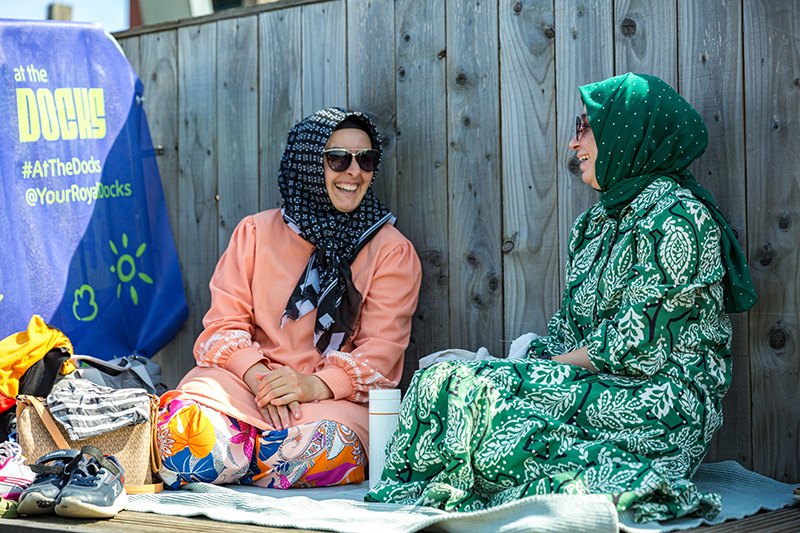
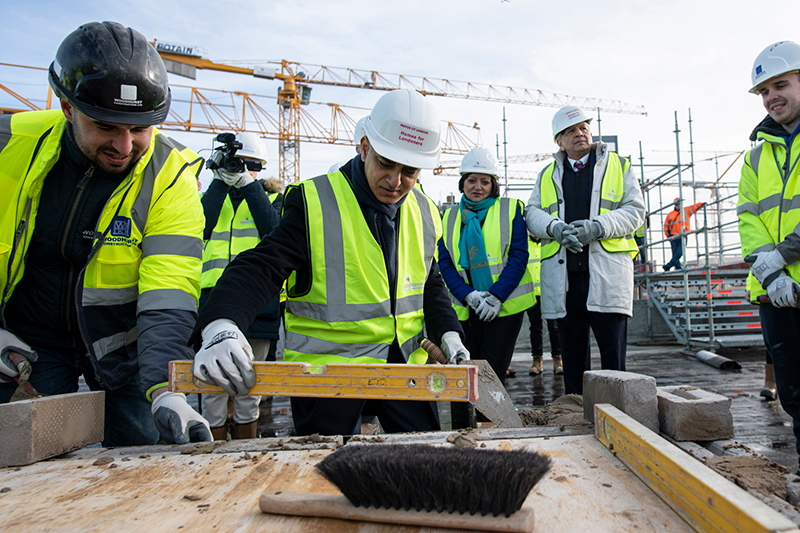
My new five-year plan sets out the vision for unlocking the full potential of this area with a multi-billion-pound regeneration programme that will deliver thousands of new homes and jobs and create a new economic powerhouse for the capital
Mayor of London, Sadiq Khan
Work has also begun on the flagship Silvertown redevelopment, one of the key sites in the Royal Docks that has laid dormant for more than 40 years eluding the attempts of successive mayors and governments to regenerate it. This will create 6,500 new homes, including hundreds of much-needed homes at social rent levels the first of which are already under construction.
The Mayor also relocated City Hall to The Crystal Building in the Royal Docks, in 2022, joining major anchor institutions such as ExCeL London, London City Airport, Tate & Lyle Sugars, and the University of East London, making it a strategically important centre for London.
The Mayor published his new five-year plan for the Royal Docks as part of his overall ambition to deliver up to 36,000 new homes, and 55,000 new jobs across the area, building on the energy and momentum of the first five years.
These new homes are part of a much-wider house-building renaissance that is taking place under Sadiq across East London. Including the Royal Docks, the Mayor is backing the delivery of 129,300* homes across major development areas, including London Riverside, Isle of Dogs, Thamesmead, and Canada Water.
Looking ahead to the coming five years we’ll unlock the full potential of the Royal Docks as a thriving part of London setting a new standard in sustainable living through more jobs, homes and opportunities.
Mayor of Newham, Rokhsana Fiaz OBE
Highlights of the five-year plan include:
- More than £2bn of public and private sector investment planned over the next five years, including £64m from the Mayor, on top of the £44m that he has already invested.
- Accelerating the delivery of key development sites at Silvertown, Royal Albert Dock, and Albert Island to unlock thousands of new homes, commercial space, jobs, and low carbon infrastructure.
- Completion of the Royal Docks Corridor – a major highways improvement project, jointly funded with Newham Council, which will create a thriving new high street along Silvertown Way.
- Creating 100,000 sqm of new commercial workspace which will support a mix of new businesses, 3,500 new jobs, and space for culture, education, and community participation.
- Constructing the brand-new Silvertown Bridge - a new pedestrian and cycle bridge over Royal Victoria Dock, which will connect Thameside communities to the new Elizabeth Line station at Custom House.
- Major transport improvements, including the completion of the Silvertown Tunnel as well as upgrades to the DLR network, and station improvements at Pontoon Dock.
- Completion of a new commercial shipyard at Albert Island, the first in a generation for London, which will ensure that the Royal Docks’ maritime traditions continue, into the future.
- £725,000 invested into local cultural and community projects to help build a thriving cultural eco-system in the Royal Docks, supporting existing creative businesses, as well as nurturing local creative talent and jobs.
Three strategic outcomes
The new five year plan is structured around three strategic outcomes:
- Prosperity, Growth & Investment The Royal Docks will become an established economic stronghold for London, home to a diverse mix of businesses and industries. The area’s growing commercial offer and innovation ecosystem will attract new investment, enable entrepreneurial activity, and create local skilled jobs.
- Sustainability & Wellbeing The Royal Docks will lead the way in sustainable investment and development, with six distinct waterside neighbourhoods that provide resilient, happy, healthy places for nature and residents to flourish.
- Culture & Community Building on the area’s existing communities and burgeoning cultural ecosystem, the Royal Docks will evolve as London’s Cultural Engine. New public spaces, waterfront and cultural amenities, and affordable creative and production workspaces, will make the Royal Docks one of the most exciting and varied places in London to live, work and play.
The Mayor of London, Sadiq Khan, said:
“Once the beating heart of global trade, today the Royal Docks is re-emerging as one of the country’s leading areas of opportunity, investment, and innovation.
“My new five-year plan sets out the vision for unlocking the full potential of this area with a multi-billion-pound regeneration programme that will deliver thousands of new homes and jobs and create a new economic powerhouse for the capital as part of my work to create a better, fairer, greener London for everyone.”
“I am pleased that we are now looking for a new development partner to transform Royal Albert Dock, one of the key sites in the Royal Docks. This will play a major role in the capital’s continuing economic success and growth Eastwards.”
Mayor of Newham, Rokhsana Fiaz, said:
“We made a promise five years ago with our first Delivery Plan that the future of the Royal Docks has to deliver real benefits and opportunities for local people. As London’s first Living Wage neighbourhood, we are making real people powered progress. Thousands of genuinely affordable homes have been built that people can afford; as well as the creation of more than 2,500 jobs created for our local people and Londoners.
“Looking ahead to the coming five years we’ll unlock the full potential of the Royal Docks as a thriving part of London setting a new standard in sustainable living through more jobs, homes and opportunities. We’ll also place a premium on the wellbeing and happiness of local people as the Royal Docks and Newham are the beating heart of London. Working with the Mayor of London and the GLA, we are setting a new standard in our vision for the Royal Docks as we turbocharge our ambitious plans with purpose and with local people.”
The Mayor of London also confirmed today that he will shortly start the search for a new development partner to regenerate Royal Albert Dock, one of the key development sites in the Royal Docks. The previous development agreement, signed by the previous Mayor, was terminated in 2022 after it became clear that the developer failed to meet its contractual obligations and deliver the scheme.
The Mayor wants to transform Royal Albert Dock into a new mixed-use employment hub, potentially including light industrial, workspace, education, logistics, sport, and leisure uses. There could also be a focus on high-value growth industries and sectors such as green tech and the data driven/digital economy, alongside a variety of affordable and private housing.
*The Mayor has published Opportunity Area Planning Frameworks that set out proposals for 129,300 homes across the following areas of East London:
